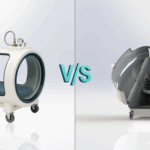Cancer is a group of diseases in which cells are aggressive (grow and divide without respect to normal limits), invasive (invade and destroy adjacent tissues), and/or metastatic (spread to other locations in the body). These three malignant properties of cancers differentiate them from benign tumors, which are self-limited in their growth and do not invade or metastasize (although some benign tumor types are capable of becoming malignant).
Nearly all cancers are caused by abnormalities in the genetic material of the transformed cells. These abnormalities may be due to the effects of carcinogens, such as tobacco smoke, radiation, chemicals, or infectious agents. Other cancer-promoting genetic abnormalities may be randomly acquired through errors in DNA replication, or are inherited, and thus present in all cells from birth. Complex interactions between carcinogens and the host genome may explain why only some develop cancer after exposure to a known carcinogen.
Genetic abnormalities found in cancer typically affect two general classes of genes. Cancer-promoting oncogenes are often activated in cancer cells, giving those cells new properties, such as hyperactive growth and division, protection against programmed cell death, loss of respect for normal tissue boundaries, and the ability to become established in diverse tissue environments. Tumor suppressor genes are often inactivated in cancer cells, resulting in the loss of normal functions in those cells, such as accurate DNA replication, control over the cell cycle, orientation and adhesion within tissues, and interaction with protective cells of the immune system.
Cancers are classified by the type of cell that resembles the tumor and, therefore, the tissue presumed to be the origin of the tumor.
Examples of general categories include:
- Carcinoma – Malignant tumors derived from epithelial cells. This group represents the most common cancers, including the common forms of breast, prostate, lung and colon cancer.
- Sarcoma – Malignant tumors derived from connective tissue, or mesenchymal cells.
- Lymphoma and leukemia – Malignancies derived from hematopoetic (blood-forming) cells
- Germ cell tumor – Tumors derived from totipotent cells. In adults most often found in the testicle and ovary; in fetuses, babies, and young children most often found on the body midline, particularly at the tip of the tailbone; in horses most often found at the poll (base of the skull).
- Blastic tumor – A tumor (usually malignant) which resembles an immature or embryonic tissue. These tumors are most common in children.
There is no known cure for cancer but modern medicine has found multiple ways in fighting the disease especially when found in its early stages. That’s why an annual checkup at you GP is so important. In most cases the cause of cancer is unknown, but it usually comes down to genes and lifestyle choices.
Ozone Therapy can not cure cancer, but it can help manage the symptoms. Salvagente have had numerous clients who have seen a dramatic improvement in their cancer after undergoing Ozone Steam Sauna Therapy. Some even had more time to get their affairs in order and to spend more quality time with their loved ones. Ozone Therapy purifies the blood, increase white blood production, combats cancer cells and combats the side effects of chemotherapy and radiation therapy. Ozone Therapy also combats backaches, pain, inflammation, fatigue, constipation, diarrhoea, headaches and improves the immune system. If you have been diagnosed with cancer, consult your doctor before starting with Ozone Therapy.
For more information, please feel free to contact us:
Salvagente
+27 (0)72 088 8293
Sign up for our weekly newsletter to keep up to date on our latest blogs and Ozone Therapy news:
[contact-form][contact-field label=’Name’ type=’name’ required=’1’/][contact-field label=’Email’ type=’email’ required=’1’/][/contact-form]








Leave a Reply